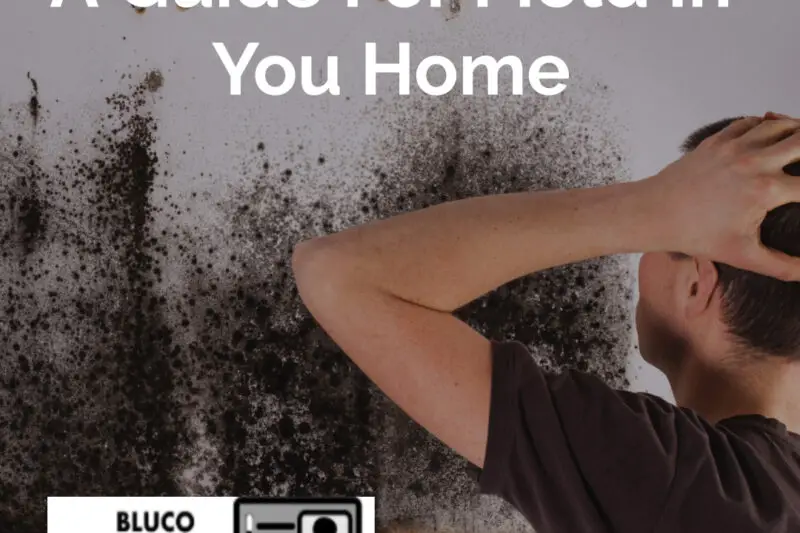A simple item may cause so much trouble.
If you’ve ever had moisture concerns in your house, you’ve definitely dealt with mold. In your home, mold can cause a lot of issues because it is a naturally occurring organism. In this article is a Complete Guide For Mold In Your Home, so let’s get started!
Mold is essential to decompose dead materials. It spores are tiny and light, and easily fly. This is an allergen that pollutes the air when grown inside.
- Some molds are deadly. Mold multiplies rapidly and consumes anything it adheres to.
Mold can form on moist sheetrock, damaging the paper inside. In addition, it rots the wood beneath it. The moldy parts must be removed.
Mold can infiltrate your home through open doors, windows, vents, and HVAC systems such as new PTAC Units, according to the CDC. Mold flourishes in wet areas like roof, window, or pipe leaks, or areas flooded. Dust and paint can develop in carpet, linens, and upholstery.
Mold can affect your health, and this tutorial will show you how to prevent mold from spreading. A professional should be sought if the polluted area exceeds 10 square feet.
Health Implications
The World Health Organization links mold spore exposure to respiratory symptoms, allergies, asthma, and immunological reactions. Mold commonly causes upper and lower respiratory ailments.
Aside from breathing difficulties, asthmatic symptoms include skin rashes, headaches and coughing. Some molds might produce fatal reactions.
Mold exposure can cause persistent fatigue, cold and flu-like symptoms, shortness of breath, and weakness.
Molds: four popular varieties and one terrifying
Mold has hundreds of thousands of subspecies that live in your home. The first four are the most frequent, while the fifth can cause major health issues when present in households.
Penicillium
There are over 200 penicillium mold species. This is the species that gave us penicillin. Mold and Bacteria Consulting Laboratories says that molds are naturally prevalent in soil, decomposing vegetation, and the air.
The MBL says the most prevalent indoor species is Penicillium chrysogenum, which lives on moist building materials, walls, carpets, mattresses, and furniture dust.
- Health Concerns: Penicillium molds, like most molds, can cause allergic reactions. Some subspecies make food inedible or even toxic, like greenish white fuzzy mold on an orange. Some subspecies are food, such as Roquefort, Camembert, and Stilton.
- What To Look For: Penicillium is one of the molds that cause food to become fuzzy and blue after being refrigerated for too long. Green, blue, or yellow fuzzy spores are abundant.
Cladosporium
Cladosporium has around 500 species. They colonize secondary walls most frequently. Also, they thrive on carpets, drapes, upholstery, wallpaper, window sills, and plywood.
Cladosporium spreads swiftly in clusters of black, yellow, or green patches.
- Wellness Concerns: Aside from respiratory troubles, Cladosporium molds can cause eye, ear, skin, and sinus infections. Itchy eyes, throat, and nose are all signs of an allergic reaction.
- Search For: clusters of black, yellow, or green dots. If not cleaned, the marks spread quickly.
Alternaria
Alternaria has roughly 50 species. This mold grows in moist spaces like the sink or shower and on old food. It’s a major plant pest.
- Nutrition Worries: Asthma is linked to this mold. This mold has been found in numerous residences, with the largest concentrations found on living room flooring. Although outdoor exposure causes greater asthma symptoms, inside exposure causes symptoms as well. According to the National Library of Medicine, “higher indoor levels of [Alternaria] antigens enhanced the risks of experiencing asthma symptoms in the past year.”
- Seek For: dense green, black, or gray colonies of Alternaria. By contrast, “black mold” has a darker color.
Aspergillus
This mold has many subspecies. Some species create mycotoxins, which are harmful.
The MLB claims Aspergillus can be found anywhere and is stirred up by vacuuming. Other sources include humidified air (HVAC), upholstered furniture (UFFI), shoes (leather), bird droppings (potted plants), PVC/paper wall coverings (PVC), gypsum board (gypsum), and decomposing wood (decomposing wood).
One species, Aspergillus fumigatus, is a human and animal pathogen that causes Aspergillosis, a lung illness.
- Wellbeing Concerns: When someone develops Aspergillosis, a ball of fungus fibers, blood clots, and white blood cells forms in the lungs or sinuses. Symptoms include no symptoms, bloody coughing, fever, chest pain, and difficulty breathing.
- What to seek for: Aspergillus species vary in color. This one is hard to see.
Stachybotrys chartarum
This is the mold that everyone fears. It’s linked to severe water damage. It also thrives on moist cellulose, such as wallboard, ceiling tiles, and cardboard.
Not all black molds are Stachybotrys, and the hazards of “black mold” may be exaggerated.
- Safety Problems: The American Society for Microbiology claims there is no indication of significant sickness from Stachybotrys exposure. A fungus previously caused an epidemic in 10 Cleveland babies. For lack of proof, the CDC halted early black mold studies.
According to a 2008 research in Toxicological Sciences, the main argument against this mold producing debilitating respiratory symptoms, immunological dysfunction, and cognitive impairment is that it is never present in sufficient amounts to cause harm.
- Search for: This mold is completely black.
How can I determine if my house has mold?
Mold isn’t often visible or odorous, especially beneath paneling. Rusted pipes and bent walls are signs of a moisture problem. As moisture draws mold, get your home evaluated if you’ve had water issues.
Mold smells musty, so find the cause. It may be hidden under the floor or in the walls.
Undiagnosed respiratory disorders are another.
Mold detection kits are available in hardware stores and online. Air-borne mold detection kits range in price from $20-$45. The CDC says it isn’t necessary to send the results to a lab to determine the mold’s species. Things vital to clean it up and mend it.
The EPA advises against using a mold testing kit. A mold test kit might show you have mold but not where it is. FALSE NEGATIVES AND POSITIVES ARE
In my home, how do I reduce mold?
Indoor mold is unavoidable. But you can be careful. Mold development isn’t usually obvious in homes, says mold removal expert Luke Armstrong. It can grow behind walls and ceilings.
That’s why prevention is key.
Moisture and oxygen are major contributors to mold formation. Toxic to mold is cellulose, which is present in wood, drywall and insulation, among other building components. Mold thrives in cellulose and dampness.
Mold prevention tips from the CDC include:
- Maintain a 50% humidity level throughout the day. The CDC recommends using an air conditioner or dehumidifier to keep it low.
- Assemble exhaust fans in the kitchen and bathrooms.
- Paint with mold inhibitors can help mold growth.
- Restore mold-free bathroom.
- Invest in a non-car
- Replace flooded carpets.
How do I remove mold from my house?
To dry out your home after a leak or flooding, fix the leak or flood damage. A dehumidifier can help chronically moist places like basements.
Seeing mold in your bathroom, you may need to enhance ventilation. Beginning in the 1960s, architects and builders began developing tighter-sealed buildings. This saves energy but keeps moisture from escaping.
Cleaning hard surfaces with soap and water or bleach. Never mix bleach and ammonia-based cleaning agents. This creates a hazardous combination that can be inhaled. Examine the labels of all household cleaners.
Also Mold is easy to find if you can smell it. The same goes for wallpaper, wood paneling, and carpeting. A leak could be under the roofing. Vacuuming thoroughly removes most water in a damp atmosphere.
We recommend hiring a mold cleanup company or PTAC Installer for any units or contaminated area larger than 10 ft. Repaneling or ceiling tiles might spread mold. Close the space to prevent mold spore spread.
For help with mold in your home call us at (929)447-2077. Also if interested, learn How To Choose The Right Hotel Air Conditioner on our site.



No Comments
Be the first to start a conversation